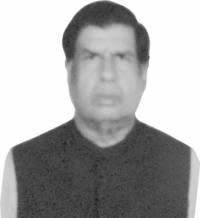The former PTI-led coalition government launched a number of welfare initiatives in furtherance of the Sustainable Development Goals (SDGs) designed to enhance social protection. Under the umbrella of the Ehsaas Programme, the government launched initiatives and aimed to offset the adverse impact of Covid-19. These programmes were mostly in the form of direct cash transfers and other budgetary and non-budgetary services. Budgeted social safety net programmes included the Benazir Income Support Programme (BISP), Pakistan Baitul Maal, Employees Old Age Benefit Institution (EOBI), Workers Welfare Fund and Pakistan Poverty Alleviation Fund. Microfinancing was made possible through specialised financial institutions that also provide microfinance services to the needy and poor of the country. The BISP is a targeted and unconditional cash transfer programme that was continuously implemented by focusing on poor women with the hopes that the targets of SDGs would be met. It provided an extremely important social safety net to the poorest segments of society and added to the overall mission of empowering women. Key policy measures and steps taken under the Unconditional Cash Transfer Programme were the expansion of the Ehsaas Kafaalat Programme, Cash Assistance Programme, Emergency Relief Assistance to Azad Jammu and Kashmir Line of Control Affectees, Harnai Earthquake Relief Programme, Emergency Relief Package for Tirah Valley, Financial Inclusion and Financial Literacy Programmes, Hybrid Social Protection Programme, Indexation of Cash Transfer, Designing of a new innovated payment model and Imported Service Delivery. It is pertinent to mention here that since its inception in 2008, the BISP had managed to disburse Rs.1326.26 billion under the unconditional and unconditional cash transfer amongst 9/11 beneficiaries all over the world. Pakistan’s Poverty Alleviation Fund was also created in April 2000 with a professed mission of transforming the lives of the poor to create a more equitable and prosperous Pakistan with an outreach to 147 districts across all four provinces and regions of the country, supporting communities, improving access to infrastructure, energy, health, education, livelihoods, finance and developing resilience to disasters. All in all, the PAF has disbursed approximately Rs.237 billion to its partner organisations. Every federal government outlines key priorities and objectives while presenting the annual budgets. The federal government of Prime Minister Shehbaz Sharif in its first budget pledged to protect the vulnerable segments of the society and provide maximum relief measures. While surfing the budget documents available through official sources, one finds mention of the BISP, PAF, Kamyab Jawan Scheme, Naya Pakistan Certificates and more. The federal government, which quite obviously is more committed towards flood relief measures, may constitute a high level committee to examine and review all welfare initiatives undertaken and launched by the previous government mainly for helping the poor segments of the society and ensuring empowerment of women. If any of the afore-mentioned initiatives of the previous government are found beneficial for society so targeted, then these should be allowed to continue with suitable budgetary and non-budgetary allocations. The federal government should come out with the relief measures it intends to undertake or has initiated already in a detailed manner. Beneficiaries of all welfare initiatives and measures being implemented by the previous federal government would obviously be in great doubt and suffering from disappointment. There is no doubt that initiatives were abundant and spread out all over the country and that they would be looking anxiously towards the incumbent government to determine whether they are feasible financially or otherwise. For promoting sustainable and inclusive development, and integral role of the federal government is and should be to provide essential public goods and services and, where necessary, extend direct support to households and meeting redistribution goals. Development can only thrive and flourish in the country when there is adequate investment in the people and where governments are responsive and accountable to their citizens’ social and economic security. Needless to state here, the pandemic had brought about substantial changes to every aspect of the peoples’ lives, setbacks have already been observed in some dimensions of human development. According to experts, the most strongly affected areas were income, health and education. The federal government is seemingly committed towards making real improvements in the lives of the people and hopefully, intends to implement policies that are aligned with poverty alleviation and SDGs indicators. The proper implementation of poverty alleviation programmes and social safety nets, coupled with reduction in the cost of living, would certainly go a long way in mitigating poverty and providing relief to the needy in the short run. Their impact, however, needed to be closely monitored to ensure access to the targeted groups. The long term remedy, remains to be sustained high economic growth with equity. The government should make strenuous efforts for achieving higher economic growth with due emphasis on human resource development.
Friday, April 19, 2024
Welfare initiatives

Opposition objects to oath-taking of MNAs amid lawlessness
5:15 PM | April 19, 2024
Electioneering to end on Friday night ahead of by-polls in 21 constituencies
5:14 PM | April 19, 2024
Fawad Chaudhry granted bail in 14 cases related to May 9 violence
5:13 PM | April 19, 2024
British Army chief lauds Pakistan Army's professionalism, expertise
5:12 PM | April 19, 2024
Israeli aircraft fire missiles at Air Force assets in Iran: Report
3:52 PM | April 19, 2024
A Tense Neighbourhood
April 19, 2024
Dubai Underwater
April 19, 2024
X Debate Continues
April 19, 2024
Hepatitis Challenge
April 18, 2024
IMF Predictions
April 18, 2024
Kite tragedy
April 19, 2024
Discipline dilemma
April 19, 2024
Urgent plea
April 19, 2024
Justice denied
April 18, 2024
AI dilemmas unveiled
April 18, 2024
ePaper - Nawaiwaqt
Advertisement
Nawaiwaqt Group | Copyright © 2024





